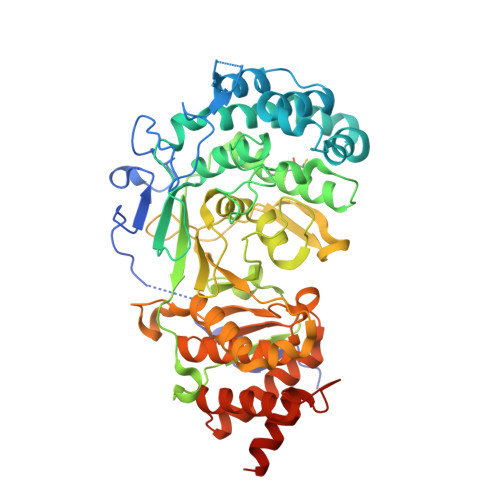Cell-Active Small Molecule Inhibitors of the DNA-Damage Repair Enzyme Poly(ADP-ribose) Glycohydrolase (PARG): Discovery and Optimization of Orally Bioavailable Quinazolinedione Sulfonamides.
Waszkowycz, B., Smith, K.M., McGonagle, A.E., Jordan, A.M., Acton, B., Fairweather, E.E., Griffiths, L.A., Hamilton, N.M., Hamilton, N.S., Hitchin, J.R., Hutton, C.P., James, D.I., Jones, C.D., Jones, S., Mould, D.P., Small, H.F., Stowell, A.I.J., Tucker, J.A., Waddell, I.D., Ogilvie, D.J.(2018) J Med Chem 61: 10767-10792
- PubMed: 30403352
- DOI: https://doi.org/10.1021/acs.jmedchem.8b01407
- Primary Citation of Related Structures:
6HMK, 6HML, 6HMM, 6HMN - PubMed Abstract:
DNA damage repair enzymes are promising targets in the development of new therapeutic agents for a wide range of cancers and potentially other diseases. The enzyme poly(ADP-ribose) glycohydrolase (PARG) plays a pivotal role in the regulation of DNA repair mechanisms; however, the lack of potent drug-like inhibitors for use in cellular and in vivo models has limited the investigation of its potential as a novel therapeutic target. Using the crystal structure of human PARG in complex with the weakly active and cytotoxic anthraquinone 8a, novel quinazolinedione sulfonamides PARG inhibitors have been identified by means of structure-based virtual screening and library design. 1-Oxetan-3-ylmethyl derivatives 33d and 35d were selected for preliminary investigations in vivo. X-ray crystal structures help rationalize the observed structure-activity relationships of these novel inhibitors.
- Cancer Research UK Manchester Institute , The University of Manchester , Alderley Park , Maccelsfield SK10 4TG , U.K.
Organizational Affiliation:





















